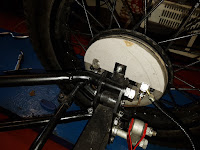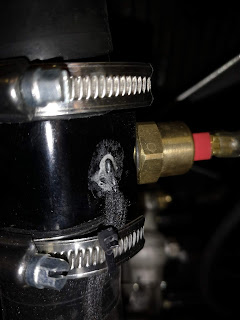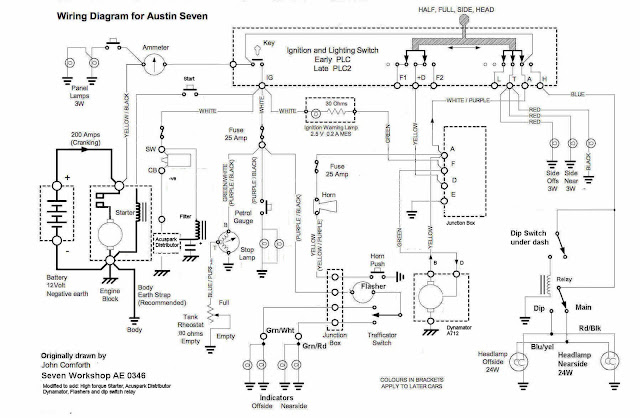Despite there being nothing published in the last two years plenty has been going on but nothing finished till now. I lost interest in the documentation for a while.
In 2017 I competed in the Boness Hill Climb and took the car and
passenger (Angus) over the Bealach na Ba (P/O West Coast 500, Applecross section).
You could think that was
job done, what next, the truth behind these appealing
images was very different. The car was low in power for hill
climbs, the brakes were non-existent, it was difficult to change
gear up or down and the suspension was terrible on corners. The
seats are uncomfortable for a long run like Applecross.
I had all but decided to
sell the car in the autumn of 2017 especially after the returning from Applecross. However I met a chap called Paul Neil
McLauchlan (Vintage and Classic Workshop) who talked me though a
series of changes that could be done to the car to improve it.
Another project was born.
The engine was removed in
autumn 2017 and the following work was done.
The gearbox was next
Moving on to the brakes
While the engine was
being built I attended to the suspension and brakes
New brake pedal box
with balance bar, dual circuit
arrangement
Twin leading shoe
brakes front and single on the rear
New handbrake leaver
Reservoir
Special tooling to
install brakes
New upper wishbones
to stabilise suspension at front
Rear pan-hard rod
The hydraulic brake
installation was the most difficult job I have ever done building cars. Do not attempt this job unless you are well prepared, have the correct skills and have access to another conversion as there is nothing documented. Although the
parts were new and all were intended to produce the end result in an Austin Seven many parts had to be custom engineered to fit an Austin Seven.
One of the biggest
challenges was hacking down the rear diff casting integral brake
backplates, with precision, to fit the new cast alloy backplates.
The brake pedal had to be engineered from scratch.
The brake pedal
mechanism (pedal box) mounting on the chassis had to be fabricated from scratch.
The handbrake had to
be extensively re-engineered.
- The Bowden front suspension had to be extensively reengineered.
Link to 2019 video
It looks more or less like
the car was in 2017 but I assure you it is a totally different beast.
I have never invested so much time and effort into a car build with
no visible evidence showing from outside.
Rear diff brake backplates
Special tooling had to be developed to cut the rear casting of the integral backplates to add the allow backplates.
Brake pedal
A CAD drawing was produced and sent off to a plasma cutting service in Hillington near Glasgow the parts were then assembled using brazing technique.
Pedal Box
A pedal box including balance bar was obtained from Rally Design, however this had to be mounted on the A7 chassis. Image shows cardboard model of mounting arrangement. Who needs CAD?
Handbrake
The handbrake on an Austin Seven is part of a substantial round shaft bar that links into mechanical brakes. As all that was now done away with another arrangement was needed. The handbrake was always too far away to actuate while strapped in so it needed moved closer.
The original site was used for a bobbin pully that reverses the action of the cable the original brake leaver was modified with a clevis to connect to the cable.
Suspension
The suspension was defective on two counts 1) the original Bowden independent suspension did not work well 2) The rear suspension needed a Panhard rod to maintain stability.
  |
| Bowden end plate |
The above images show the fabrication of the front suspension the cardboard simulated the mudguard mounting changes. CAD came to the rescue again with a drawing remodeling the Bowden end plates to take the upper wishbone. The drawing was sent to a plasma cutting service. I needed all 4 plates to be made to a tight tolerance.
The rear suspension had a Panhard rod added.
Link to 2019 video
Here is an Index page for the build

































